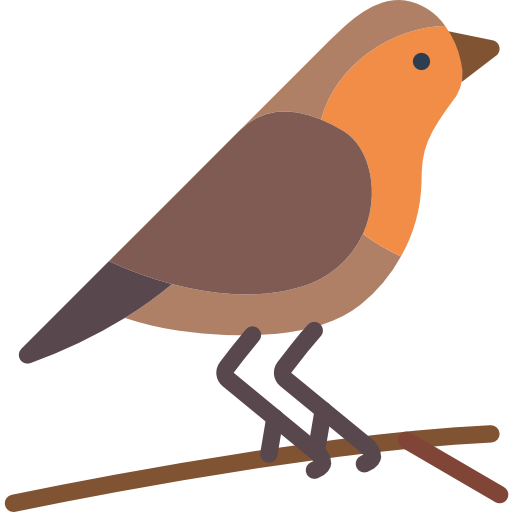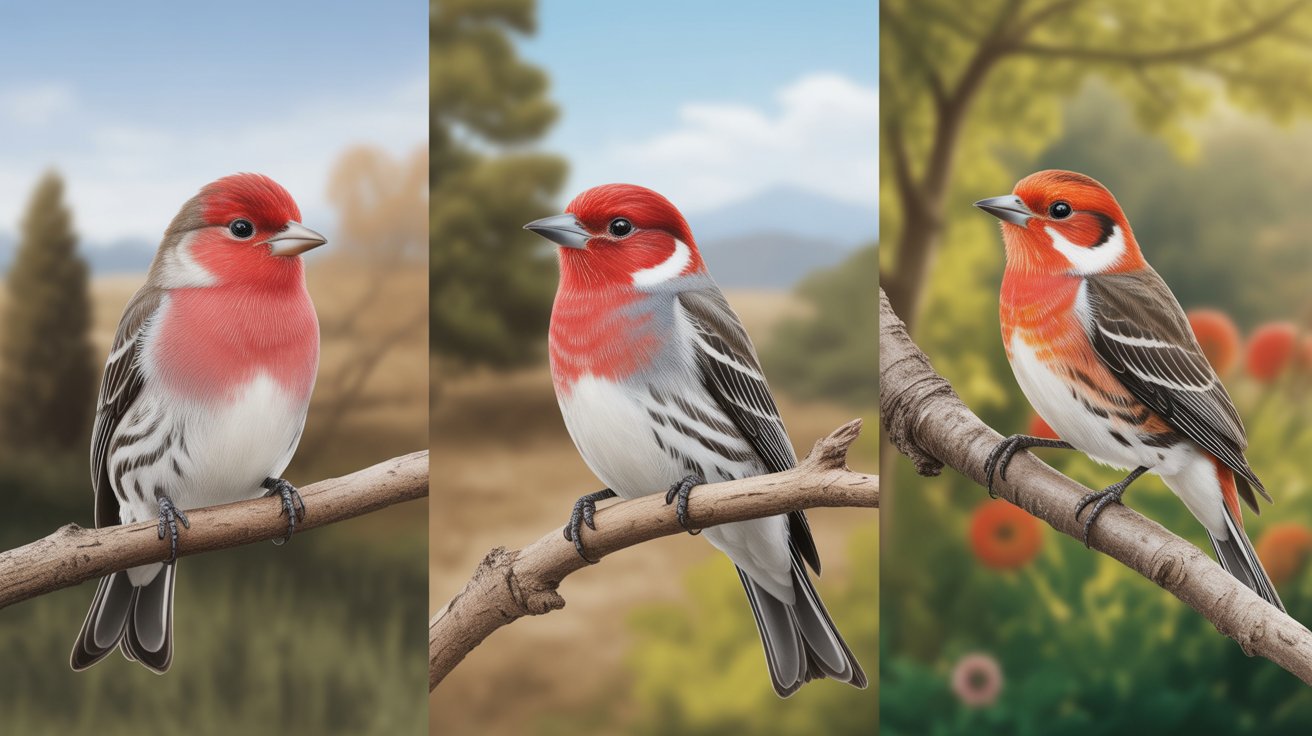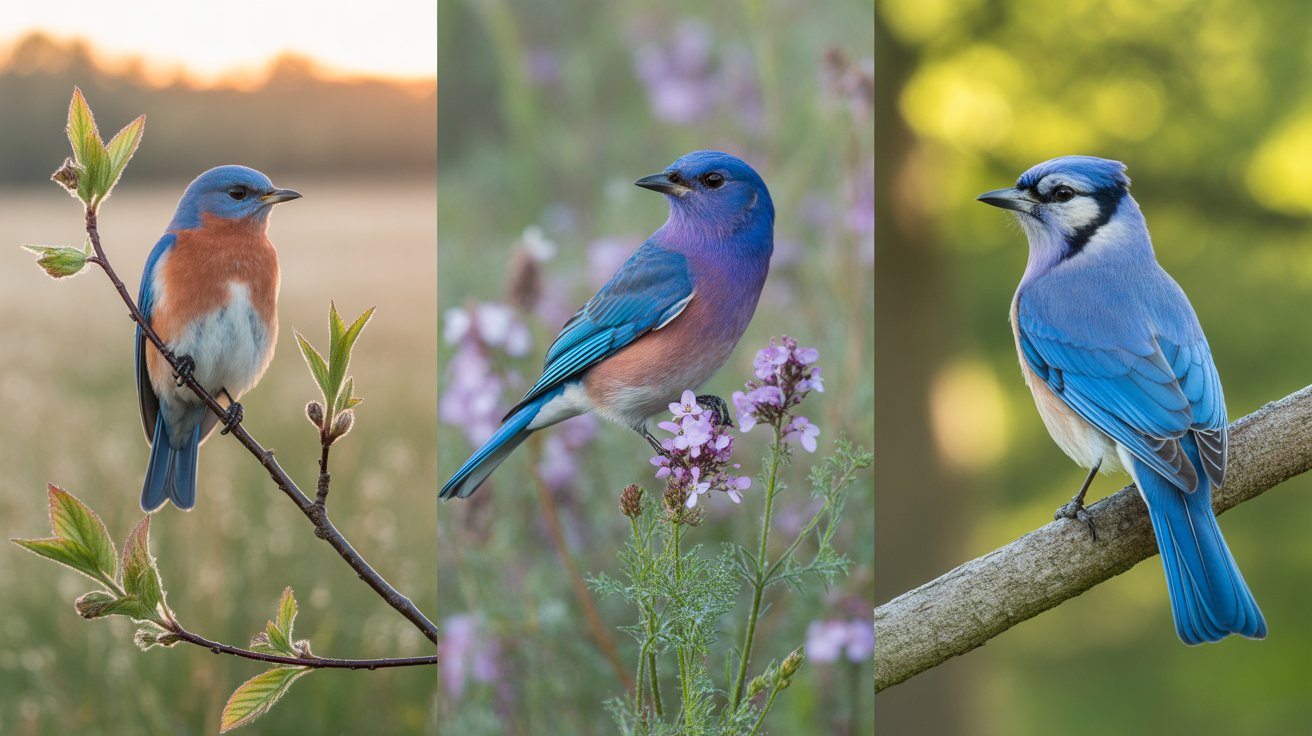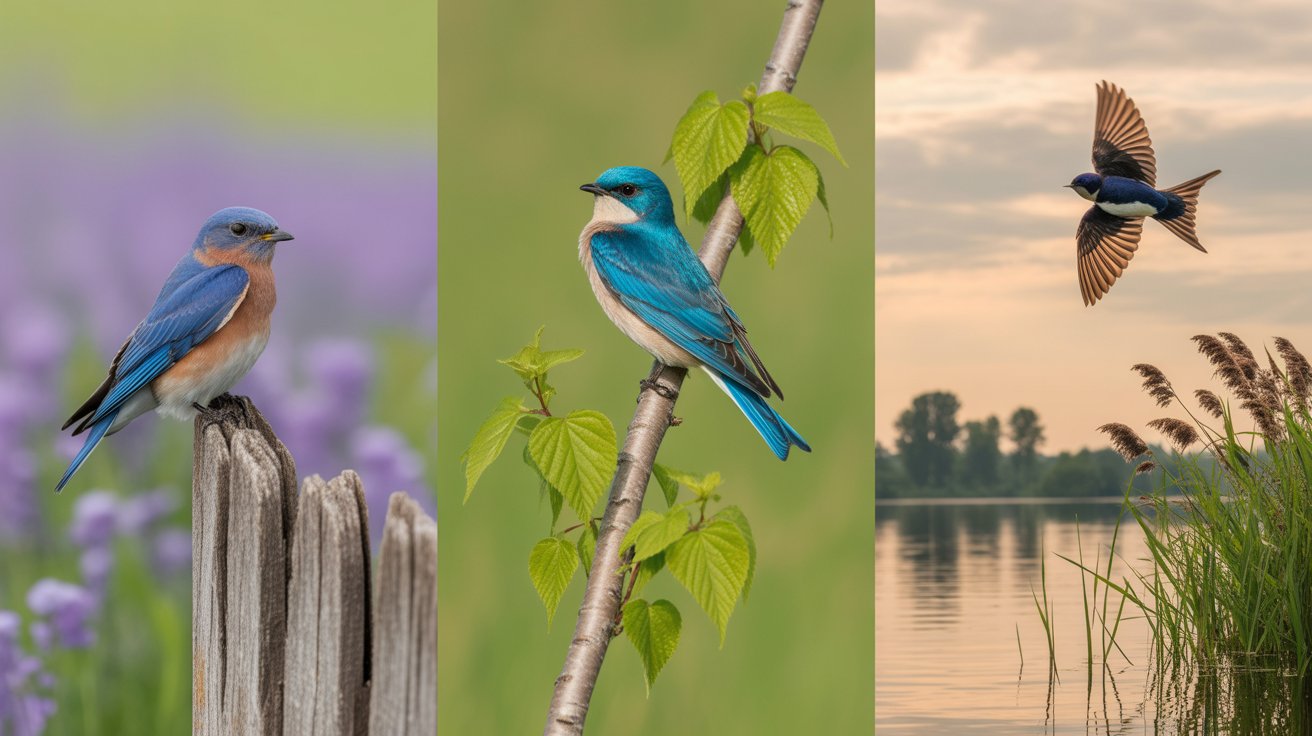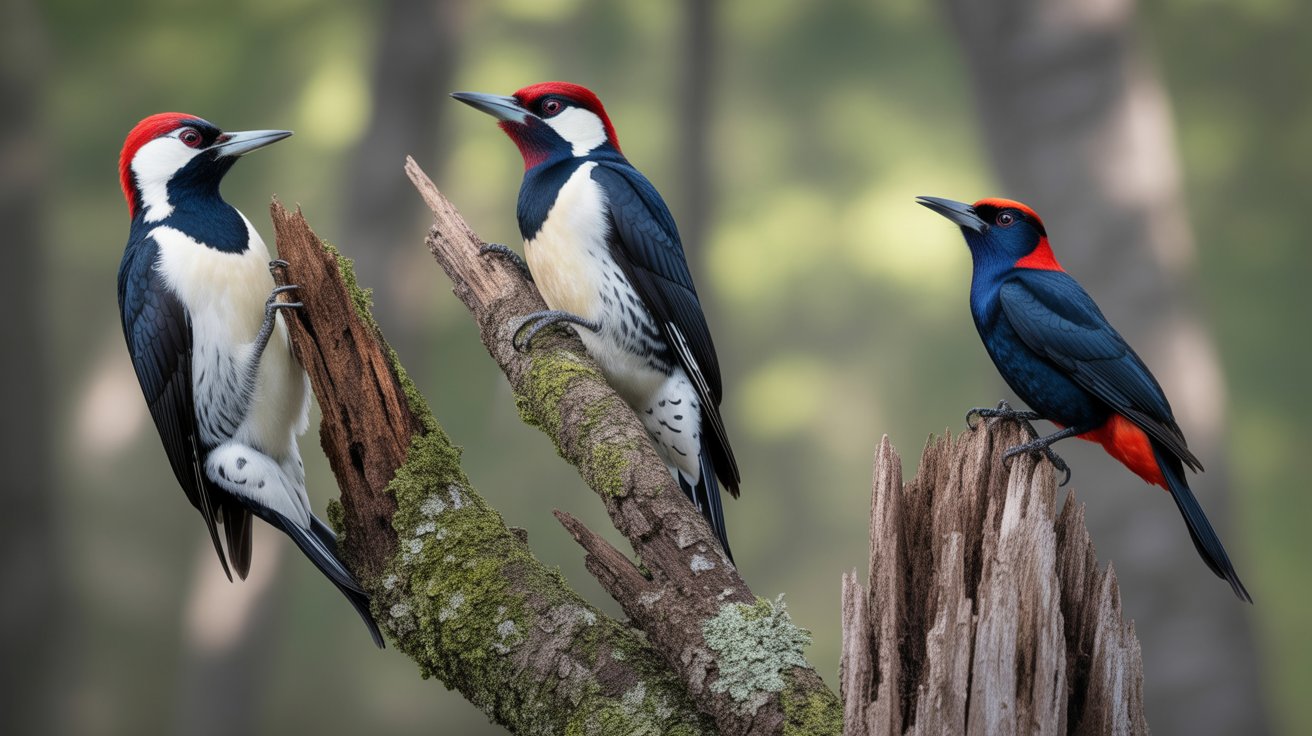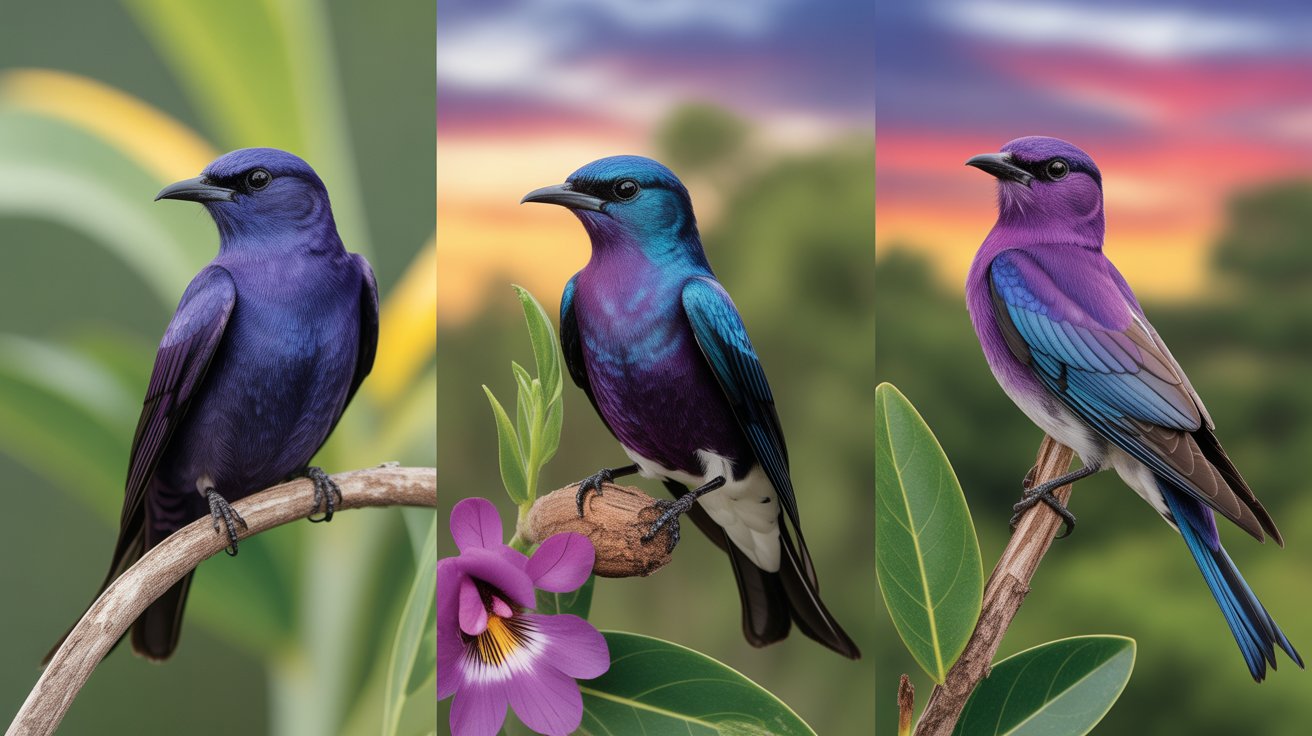If you live in Alabama or plan to visit, you’ll quickly notice that the state is a paradise for bird lovers. From the northern Appalachian foothills to the coastal wetlands along the Gulf of Mexico, Alabama’s varied landscapes provide ideal habitats for hundreds of bird species. Whether you’re walking through your backyard, exploring forests, or birdwatching near rivers and marshes, there’s always a good chance to spot a colorful feathered friend.
You don’t need to be a professional birder to enjoy this experience. Many common birds in Alabama are easy to identify with just a little observation. Bright red cardinals perched on fences, blue jays calling loudly from the trees, or woodpeckers drumming on tall pines are some of the everyday sights you can expect. The more time you spend outdoors, the more rewarding it becomes to recognize their patterns, sounds, and behavior.
This guide will help you explore 15+ of the most common birds you can see in Alabama. For each bird, you’ll find helpful descriptions, scientific details, and tips for spotting them in your yard or nearby parks. Whether you’re starting a birdwatching hobby, teaching kids about nature, or just curious about the wildlife around you, this list will make your Alabama birding adventure even more enjoyable.
15+ Common Birds in Alabama
Contents
1. Northern Cardinal
The Northern Cardinal is one of Alabama’s most beloved birds, easily recognized by its brilliant red feathers and striking crest. If you spend time outdoors in the morning, you’ll often hear their cheerful, whistling song before you see them. Cardinals are year-round residents in Alabama, meaning you can enjoy their beauty during all four seasons.
Males are bright red with a black mask around the face, while females are more subdued in color with warm brown plumage and tinges of red on the crest, wings, and tail. Their vivid colors make them easy to spot, even in thick vegetation.
- Scientific name: Cardinalis cardinalis
- Length: 8.3–9.1 inches
- Wingspan: 9.8–12.2 inches
- Weight: 1.5–1.7 ounces
Cardinals prefer woodland edges, backyards, and gardens. They’re frequent visitors to bird feeders, especially those filled with sunflower seeds. If you’d like to attract them, plant shrubs and trees where they can nest and find shelter. Their territorial nature means you might see males chasing each other during breeding season, adding drama to your backyard birdwatching.
2. Blue Jay
Blue Jays are known for their intelligence and bold personalities. With their vivid blue, white, and black plumage, they add a splash of color to Alabama’s forests and suburban areas. These birds are loud, often making a variety of calls that include whistles, clicks, and even mimicked hawk cries.
They are not shy around people and can often be spotted near feeders or open spaces. Their strong social behavior makes them fun to watch, as they often travel in groups.
- Scientific name: Cyanocitta cristata
- Length: 9–12 inches
- Wingspan: 13–17 inches
- Weight: 2.5–3.5 ounces
Blue Jays eat a wide range of food, including acorns, seeds, insects, and occasionally small vertebrates. They are known to cache acorns in the ground, which actually helps in the growth of oak trees. To attract Blue Jays, offer peanuts or corn at your feeder. Their curious behavior and bright plumage make them one of Alabama’s most recognizable birds.
3. American Robin
The American Robin is a common sight in Alabama, especially in open lawns and gardens. Known for its rusty-red breast and cheerful song, this bird is often considered a symbol of spring. However, in Alabama, robins can be seen year-round.
They’re ground feeders, often spotted hopping across lawns in search of earthworms and insects. Their melodious song is one of the first you’ll hear at dawn, making them a favorite for early risers.
- Scientific name: Turdus migratorius
- Length: 9.1–11 inches
- Wingspan: 12–16 inches
- Weight: 2.7–3 ounces
American Robins thrive in suburban yards, farmlands, and parks. During the breeding season, they build nests using mud and grass, often on tree branches or ledges. If you enjoy gardening, you’ll likely appreciate their presence as they help control insect populations.
4. Carolina Chickadee
Tiny but energetic, the Carolina Chickadee is a year-round resident across Alabama. With its black cap and bib, white cheeks, and gray wings, it’s both adorable and easy to recognize. Despite their small size, these birds are very active and curious.
Their “chick-a-dee-dee-dee” call is a familiar sound in Alabama backyards. They often travel in mixed flocks during winter, joining other small birds like nuthatches and titmice.
- Scientific name: Poecile carolinensis
- Length: 3.9–4.7 inches
- Wingspan: 5.9–7.9 inches
- Weight: 0.3–0.4 ounces
Carolina Chickadees love feeders stocked with sunflower seeds, suet, and peanuts. Because of their curious nature, they often come close to people. If you want to attract them, put up a nesting box in your yard. These birds play an important role in controlling insect populations.
5. Eastern Bluebird
Few birds are as charming as the Eastern Bluebird, with its bright blue wings and reddish-orange breast. In Alabama, these birds are especially common in open meadows, pastures, and orchards. They prefer areas with scattered trees and low vegetation, where they can perch and hunt for insects.
Eastern Bluebirds are cavity nesters, which means they rely on old woodpecker holes or man-made nest boxes. If you want to invite them into your yard, consider setting up a bluebird house on a pole in an open area.
- Scientific name: Sialia sialis
- Length: 6.3–8.3 inches
- Wingspan: 9.8–12.6 inches
- Weight: 1–1.2 ounces
Their diet is primarily insects in summer and berries in winter. Watching a bluebird perched on a fence post or darting across a field is always a treat. They’re also a symbol of happiness and are often featured in folk tales and songs.
6. Red-bellied Woodpecker
The Red-bellied Woodpecker is one of the most eye-catching woodpeckers in Alabama. Despite its name, the red belly is faint and often hard to see. Instead, you’ll easily recognize them by the striking red cap and nape, along with black-and-white barred wings.
They’re common in forests, woodlands, and suburban backyards with mature trees. Their rolling call and drumming on tree trunks make them easy to detect even before spotting them.
- Scientific name: Melanerpes carolinus
- Length: 9–10.5 inches
- Wingspan: 13–17 inches
- Weight: 2–3.2 ounces
These woodpeckers eat insects, nuts, and fruit. They often visit suet feeders, especially in winter. Watching them climb trees with agility and hammer away at bark makes them fascinating to observe. If you have large shade trees in your yard, chances are you’ll host these beautiful birds.
7. Mourning Dove
Mourning Doves are peaceful-looking birds often seen perched on wires, fences, and rooftops. With their soft gray-brown plumage, black spots on the wings, and long tails, they’re among the most common birds in Alabama. Their gentle cooing calls are soothing and often heard at dawn and dusk.
They forage mostly on the ground, feeding on seeds and grains. If you scatter millet or cracked corn in your yard, Mourning Doves will likely show up.
- Scientific name: Zenaida macroura
- Length: 9–13 inches
- Wingspan: 17–18 inches
- Weight: 3.4–6 ounces
Mourning Doves are strong fliers, reaching speeds of up to 55 miles per hour. They’re also prolific breeders, often raising multiple broods each year. Their gentle presence and soft wing whistles when they take flight make them a delight for birdwatchers.
8. Tufted Titmouse
The Tufted Titmouse is a small, lively bird that’s easy to spot with its gray crest and big, dark eyes. In Alabama, they’re frequent backyard visitors, often joining mixed flocks with chickadees and nuthatches. Their sweet “peter-peter-peter” call is a common sound in woodlands and suburbs.
- Scientific name: Baeolophus bicolor
- Length: 5.5–6.3 inches
- Wingspan: 7.9–10.2 inches
- Weight: 0.6–0.9 ounces
Tufted Titmice are curious and bold, often grabbing sunflower seeds from feeders and flying off to crack them open. They nest in cavities, so putting up a birdhouse is a great way to attract them. Their playful behavior and expressive crests make them entertaining backyard visitors year-round.
9. Carolina Wren
The Carolina Wren is a tiny bird with a loud, musical voice that seems much too big for its size. Its reddish-brown body, white eyebrow stripe, and energetic tail make it easy to recognize. These wrens are year-round residents across Alabama and are especially fond of dense shrubs, thickets, and gardens.
- Scientific name: Thryothorus ludovicianus
- Length: 4.7–5.5 inches
- Wingspan: 11 inches
- Weight: 0.6–0.8 ounces
Carolina Wrens are insect-eaters but will also visit feeders for suet and sunflower seeds. Their bubbly “tea-kettle, tea-kettle, tea-kettle” song is a common backyard soundtrack. Despite their small size, they are highly energetic and fiercely territorial.
10. American Goldfinch
The American Goldfinch brings a splash of sunshine to Alabama’s fields and gardens. Males are bright yellow with black caps during summer, while females and winter birds are more olive-colored. Their bouncy flight pattern and sweet calls make them easy to spot in open areas.
- Scientific name: Spinus tristis
- Length: 4.3–5.1 inches
- Wingspan: 7.5–8.7 inches
- Weight: 0.4–0.7 ounces
Goldfinches primarily eat seeds, especially from thistles, sunflowers, and dandelions. If you put out a nyjer (thistle) feeder, you’ll likely attract these cheerful birds. Their molting pattern gives them two distinct looks each year—vibrant yellow in summer and a duller brownish color in winter.
11. Downy Woodpecker
The Downy Woodpecker is the smallest woodpecker in North America, yet it’s one of the most common in Alabama. With its black-and-white checkered wings and tiny red patch on the back of the male’s head, it’s both attractive and easy to identify.
- Scientific name: Dryobates pubescens
- Length: 5.5–6.7 inches
- Wingspan: 9.8–11.8 inches
- Weight: 0.7–1 ounce
These woodpeckers are frequent visitors to suet feeders, especially in winter. They also eat insects and sometimes drink sap from trees. Because of their small size, they often mingle peacefully with chickadees and nuthatches. Watching them tap on tree bark is always entertaining.
12. Brown Thrasher
The Brown Thrasher is Alabama’s state bird and is known for its sharp yellow eyes and long, curved bill. Its reddish-brown body and streaked underparts give it a striking appearance. Thrashers are excellent singers, with a repertoire of over 1,000 different song variations.
- Scientific name: Toxostoma rufum
- Length: 9.3–12 inches
- Wingspan: 11–13 inches
- Weight: 2.1–3.1 ounces
Brown Thrashers are usually found in dense shrubs and thickets. They forage by scratching through leaf litter, searching for insects, seeds, and berries. While they can be secretive, their loud and complex songs often give away their presence.
13. Great Egret
The Great Egret is a large, elegant bird often seen in Alabama’s wetlands, lakes, and coastal areas. With its long neck, snowy white plumage, and yellow bill, it’s a graceful sight, especially when hunting in shallow water.
- Scientific name: Ardea alba
- Length: 37–41 inches
- Wingspan: 51–57 inches
- Weight: 1.5–3.3 pounds
Egrets feed mainly on fish, frogs, and small aquatic creatures. Their slow, patient hunting style makes them mesmerizing to watch. In flight, their long legs trail behind, and their broad wings beat with elegance. These birds are symbols of Alabama’s rich wetland ecosystems.
14. Northern Mockingbird
The Northern Mockingbird is a familiar bird across Alabama, recognized for its incredible ability to mimic the songs of other birds. They can produce dozens of different calls in a single session, making them one of the most versatile songsters.
- Scientific name: Mimus polyglottos
- Length: 8–11 inches
- Wingspan: 12–15 inches
- Weight: 1.6–2 ounces
Mockingbirds are gray with white wing patches, often visible in flight. They’re highly territorial and may aggressively defend their nesting areas. Despite their boldness, their beautiful and varied songs make them a joy to listen to in neighborhoods and gardens.
15. Bald Eagle
The Bald Eagle, America’s national bird, can also be seen in Alabama, especially near large lakes and rivers. With its striking white head and tail, massive wingspan, and powerful build, it’s one of the most awe-inspiring birds you can encounter.
- Scientific name: Haliaeetus leucocephalus
- Length: 28–40 inches
- Wingspan: 71–90 inches
- Weight: 6.5–14 pounds
Bald Eagles primarily eat fish, which they snatch from the water with their sharp talons. They also scavenge and sometimes steal prey from other birds. Spotting a Bald Eagle soaring high in the sky is always a memorable experience, and their presence reflects Alabama’s healthy waterways.
FAQs
Q1: What is the most common backyard bird in Alabama?
The Northern Cardinal is the most common and easily recognized backyard bird across Alabama.
Q2: What bird is Alabama’s state bird?
The Brown Thrasher (Toxostoma rufum) is the official state bird of Alabama.
Q3: Do Bald Eagles live in Alabama year-round?
Yes, Bald Eagles nest and live in Alabama, particularly around rivers and lakes.
Q4: What’s the best way to attract songbirds in Alabama?
Offer sunflower seeds, suet, and peanuts at feeders, along with native plants and shrubs for nesting.
Q5: When is the best time for birdwatching in Alabama?
Spring and fall migration seasons are the best times, but Alabama offers great birdwatching year-round.
Conclusion
Birdwatching in Alabama is rewarding because the state’s diverse habitats support such a wide variety of species. From tiny chickadees and wrens to majestic Bald Eagles and elegant egrets, every outing offers the chance to see something remarkable. You don’t even need to leave your yard to start observing—many of these common birds visit feeders and gardens regularly.
Learning to recognize Alabama’s common birds can make your time outdoors more enjoyable and meaningful. Not only do you gain a greater appreciation for nature, but you also help protect local ecosystems by encouraging bird-friendly habitats. Whether you’re a beginner or an experienced birder, Alabama’s feathered residents will continue to surprise and inspire you.
